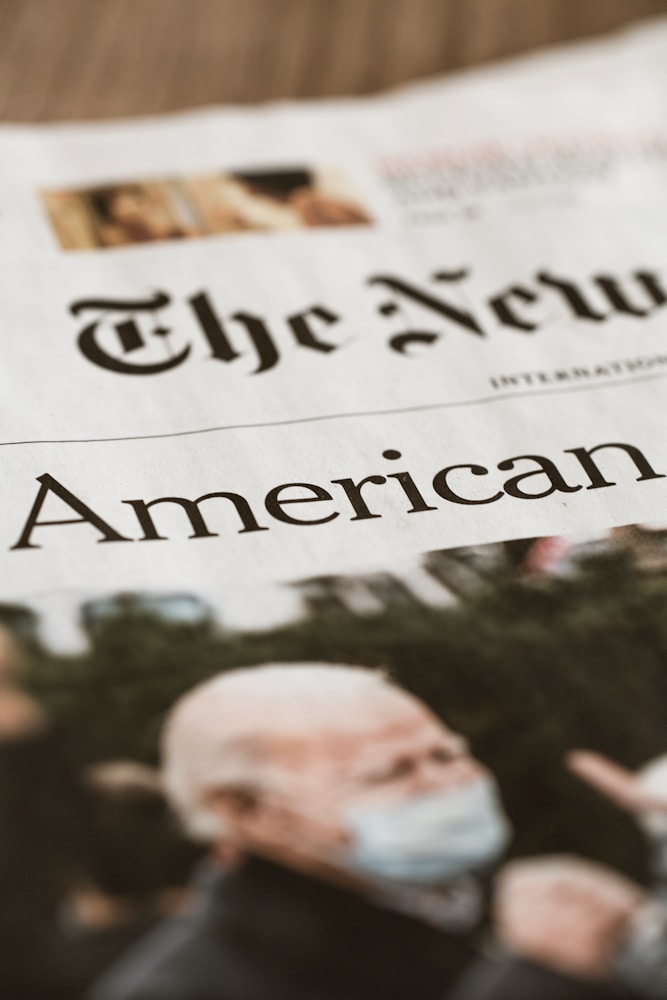Turn on a TV in the morning. Or open a news app at lunch. You will likely see a familiar face. That person is the news anchor. They are the guide for the show. They help us make sense of what is going on, right now, in our town and in the world.
But what does a news anchor really do? Are they the same as a reporter? How do they get that job? And why does their role still matter in a time of phones, feeds, and fast breaking news?
Let’s walk through it together in plain, easy steps.
The Basic Meaning of “News Anchor”
A news anchor is a journalist who presents the news to the public. They are the main host of a news program. We see them in the studio. They speak to the camera. They read or tell the top stories of the day. They also talk with reporters in the field and with guests in the studio.
In other words, an anchor is the steady voice of the show. They keep things clear. They move the program along. And they help us follow the story from start to finish.
Anchors work on TV, radio, and online video. In the U.S., we often call them “anchors,” “newscasters,” or “news presenters.”
Why We Call Them “Anchors”
The word “anchor” comes from the idea of an anchor on a ship. It holds the ship steady. It keeps it from drifting.
A news anchor does the same thing for a broadcast. News can be messy. Facts come in fast. Emotions run high. The anchor helps hold the show steady. They are the center point for the viewer.
That is why the term stuck in American news, then spread around the world.
What a News Anchor Does on Air
Most of us know what anchors do when we watch them. But let’s name it clearly.
They Present the Main Stories
Anchors share the top news of the day. That can be local crime, city hall news, sports, weather, or big national events.
They often read from a teleprompter. But they do more than just read. They set the tone. They add context. They help us understand why a story matters.
They Lead Breaking News
When big news hits, anchors often stay on air for hours. Think of storms, big trials, elections, or major attacks.
In these moments, the anchor must stay calm. They must sort new facts from rumors. They must guide us through updates without panic.
This is one of the hardest parts of the job.
They Interview Guests
Anchors often talk to experts, leaders, and people close to the story. They may interview a mayor during a flood. Or a doctor during a health scare. Or a witness after a big event.
A good anchor asks clear questions, listens fast, and keeps the talk useful for viewers.
They Toss to Reporters
You hear this all the time:
“Let’s go live to our reporter downtown.”
Anchors link the studio to the field. They introduce the reporter’s work. Then they come back and sum it up for us.
That back-and-forth is part of how a news show feels like one team, not a bunch of loose clips.
They Keep the Show Running
Anchors are also time managers. News shows have a tight clock. Ads, weather blocks, sports, live shots, and video all have to fit.
So the anchor must move the show forward with smooth handoffs. They are like a traffic coach for the broadcast.
What Anchors Do Off Air
Here’s the part many people don’t see. Anchors are not only “faces.” They do real reporting work too.
They Write and Edit Scripts
In many U.S. newsrooms, anchors help write the stories they read. They may also edit scripts from producers and reporters.
They fix facts. They cut fluff. They make the words simple and sharp.
Even in big network shows, anchors work closely with producers on what to say and how to say it.
They Prepare for Interviews
Before an interview, anchors study the topic. They read notes. They check facts. They plan follow-ups.
A strong interview looks easy. But it takes prep.
They Join Editorial Talks
Anchors often sit in daily news meetings. The team decides what stories matter most today. They pick the order of the show. They talk about fairness and safety.
Anchors have a voice in that plan, since they will lead it on air.
They Represent the Station
In local U.S. news, anchors often go to town events, school talks, charity drives, and public panels. They meet viewers in real life.
This helps build trust. It also reminds anchors who they serve.
News Anchor vs. News Reporter
People mix these roles up, and it makes sense. They both deliver news. But their main jobs are different.
Where They Work
- Anchors work mostly in the studio.
- Reporters work mostly in the field.
Reporters go to scenes. They talk to people there. They gather video, quotes, and facts.
Anchors use that work to guide the show for us.
What They Focus On
- Anchors focus on presenting and connecting stories.
- Reporters focus on finding and building stories.
That said, many anchors also report, and many reporters sometimes anchor. But the “home base” is still different.
How the Audience Sees Them
Anchors are the most visible people in the newsroom. In many cities, they become familiar voices for years.
Reporters may appear less often, and they rotate by story or beat.
Both roles matter. They just serve different jobs in the same mission.
Different Types of News Anchors
Not all anchors do the same kind of show. In the U.S., we see a few common types.
Local News Anchors
These anchors work at city or regional stations. They cover schools, roads, crime, weather, and state politics.
They often become part of a town’s daily life. Many viewers feel they “know” them.
Network News Anchors
These are the anchors for big national shows on ABC, NBC, CBS, and other networks.
They cover major U.S. and world events. Their shows reach millions.
Cable News Anchors
Cable channels run news all day. Anchors on these shows may host long blocks with commentary and guests.
Some cable shows blend news and opinion more than local or network news.
Digital and Streaming Anchors
More news now lives online. Many outlets have anchors who host YouTube shows, podcasts, and live streams.
They still do the anchor job. The screen is just smaller and the pace is often faster.
Skills a Good Anchor Needs
Being an anchor looks smooth. But under the calm surface, there are key skills at work.
Clear Communication
Anchors must speak in a way we can understand fast. That means simple words, strong pacing, and no mumbling.
Warm but Steady Presence
We want anchors to feel human. But we also want them to stay solid in hard moments.
The best anchors show care without losing control.
Quick Thinking
Live TV is full of surprises. A guest might go off script. A video might not load. A breaking alert might hit mid-sentence.
Anchors must adapt in real time.
Strong News Judgment
They need to know what matters, what is true, and what is still a guess. In fast news, this skill keeps a show honest.
Teamwork
Anchors do not work alone. They rely on producers, writers, camera crews, and field reporters.
A great anchor lifts the whole team.
How People Become News Anchors
There is no single road. But there is a common path in the U.S.
Step 1: Learn Journalism
Many anchors study journalism, media, or communications in college. They learn writing, ethics, and how to report.
Some start in campus radio or TV.
Step 2: Start as a Reporter
Most anchors begin as reporters. They cover stories in the field. They learn how to dig for facts and tell a clear story.
This builds real skill, not just style.
Step 3: Move Into the Anchor Chair
After years of reporting, some people get a chance to anchor. It may start with weekend news or a morning show.
If they do well, they can rise into bigger time slots and bigger markets.
Step 4: Keep Growing
Even top anchors keep learning. News changes. Tools change. Audience needs change.
Good anchors change with it.
The Anchor’s Role in Trust and Democracy
In the U.S., the press has a special job. We often call it the “fourth estate.” It helps hold power to account.
Anchors are part of that system.
They are the public face of a newsroom’s work. When we trust an anchor, we often trust the station. When we doubt them, that doubt spreads too.
That is why anchors must take ethics seriously. They must correct errors. They must avoid hype. They must separate facts from opinion.
In other words, they are not just performers. They are public servants.
How the Job Is Changing Today
News is not the same as it was 30 years ago. Anchors are adapting in big ways.
More Platforms
An anchor might do the 6 p.m. show, then post a short clip on TikTok, then host a live Q&A on YouTube.
The job now spans many screens.
More Direct Audience Contact
Social media lets viewers talk right to anchors. That can be good and hard.
It helps anchors hear what people care about. But it also brings more pressure, more noise, and sometimes more threats.
Faster News Cycles
Stories move in minutes now. Anchors must be ready to go live quickly, even with limited facts.
This raises the need for care. Speed is useful, but truth matters more.
New Kinds of Storytelling
Data visuals, maps, phone video, and live streams are now normal. Anchors help explain these tools to viewers and keep them in context.
Common Myths About News Anchors
Let’s clear up a few quick myths we still hear.
Myth 1: Anchors Just Read What Others Write
Reality: Many anchors help write, edit, and shape scripts. They also join news planning.
Myth 2: Anchors Do Not Report
Reality: Many anchors still report, especially in local news. They may cover major stories and special projects.
Myth 3: Looks Matter More Than Skill
Reality: TV is visual, so presence matters. But you cannot fake skill for long. Viewers notice who is sharp, fair, and steady.
Myth 4: Anchors Always Share Their Personal Views
Reality: Good anchors aim for fairness. Some shows lean into opinion, but many anchors work hard to stay neutral in tone, even when the topic is hot.
Why News Anchors Still Matter
You might ask why this role lasts in the age of apps and AI. Here is why.
They Help Us Sort the Noise
The internet is loud. Anyone can post anything. An anchor stands as a filter. They bring verified facts from a newsroom.
They help us see what is real.
They Give Stories Context
A headline alone can scare us or mislead us. Anchors add the “why.” They link events to bigger patterns.
That makes news useful, not just fast.
They Offer a Shared Experience
When millions watch the same anchor during a big event, we feel connected. We feel like we are not alone in a crisis or a win.
That shared space is part of civic life.
They Hold a Line in Emergencies
During storms, fires, or public danger, anchors often stay on air to guide us. They keep updates steady and clear.
In those moments, their role is more than TV. It is safety.
A Living Job, Not a Static One
A news anchor is not just a voice behind a desk. They are a working journalist. They present the day’s news. They guide us through breaking events. They support reporters. They write and edit. They lead a show with calm skill.
And in the U.S., they do it in a system built on free speech and public trust.
News fights for our attention every day. But the anchor’s job is simple at heart: help us understand what matters, and help us do it together.





